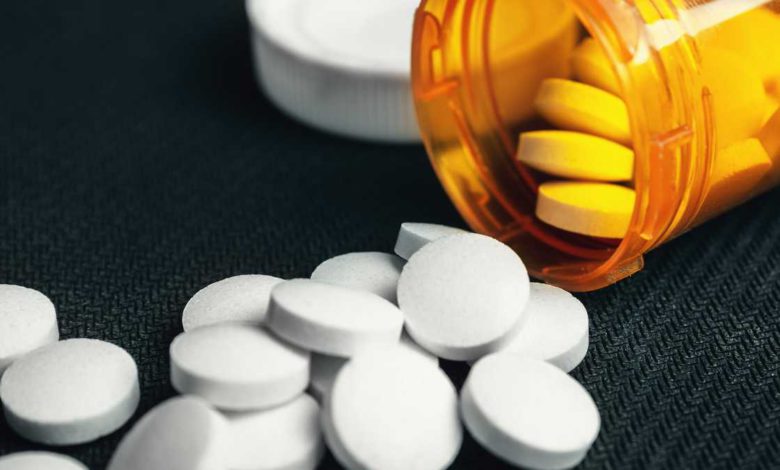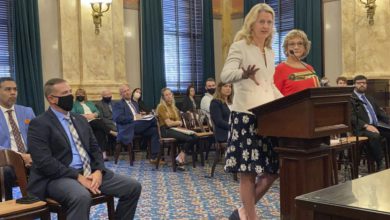

Video above: Johnson & Johnson vaccine developed with previously tested technologyThe practice of finding new uses for old medications — called repurposing or repositioning drugs — is not new.The most famous (or perhaps infamous) example is sildenafil — aka: Viagra. Originally developed to treat high blood pressure, the little blue pill received U.S. Food and Drug Administration approval in 1998 to treat erectile dysfunction, and very quickly became a blockbuster drug.Another notable example is thalidomide. Given to women in the late 1950s to prevent morning sickness — and soon found to cause severe birth defects — it got a second life in 1998 as treatment for leprosy (now called Hansen's disease), and then a third life in 2006, when it was approved to treat multiple myeloma, cancer of the bone marrow.When COVID-19 became a pandemic last year, the race was on to find any treatment that could help against the novel virus that gravely sickened and even killed some, while leaving others completely unscathed.One option was developing new medications that specifically targeted SARS-CoV-2, the virus that causes COVID-19, from scratch. New treatments, such as monoclonal antibodies, are the result of those efforts. But developing, testing and then getting approval from the FDA, not to mention creating the infrastructure for the production and distribution of a new medication, all takes time — time the world didn't, and still doesn't, have.Other researchers quickly began to look around at what was already on hand, in hospitals and pharmacies, and on drug store shelves."The advantage of drug repurposing is that that drug is already approved. It's already gone through the regulatory process to show that it's safe and effective for something. So if you can find additional uses for that drug, you already know there's a good safety profile," explained Dr. David Fajgenbaum, an immunologist at the University of Pennsylvania, and the director of the Center for Cytokine Storm Treatment and Laboratory.Not to mention: Cheap, generic versions of many older medications exist because their patents have expired."It's just a matter of matching the right drug to the right disease," Fajgenbaum said. "Thankfully, there are over 2,000 drugs that are already approved by the FDA for at least one disease, and we've learned that there are many other diseases that those drugs can also be repurposed for."In fact, Fajgenbaum said he has "dedicated life towards advancing drug repurposing" for diseases without specific treatments. His passion is driven in part by his own experience. In 2010, while in medical school, he first became ill with Castleman disease, a rare autoimmune disorder that, like COVID-19, can trigger the immune system to suddenly flood the body with inflammatory chemicals in a so-called cytokine storm; the result can be tissue and organ damage, and sometimes death.Castleman disease brought Fajgenbaum close to death five times — until he found his own treatment in a repurposed drug."I'm actually alive today because of a drug that was developed 30 years ago for another condition that we identified through a very systematic process and we thought it could help to save my life," he said. "Here I am, over seven years later."During the time he was sick, he founded the Castleman Disease Collaborative Network, a global initiative devoted to fighting Castleman disease. CDCN's collaborative method for organizing medical research later became a model for other diseases without treatments.A blueprint to save livesWhen COVID-19 emerged, Fajgenbaum realized that he was perfectly positioned to look for repurposed drugs to fight it. On March 13, 2020, the day when much of the country began to shut down, "I found myself that night sitting next to my wife, hoping and praying that some researchers somewhere would follow the blueprint that we went through to identify this drug that saved my life," he said.About a minute later, he said, he realized "that researcher somewhere" would be him. He tapped his team at the Center for Cytokine Storm Treatment and Laboratory."I turned to my team and said, 'This is a disease that has many similarities to Castleman disease. You've experienced doing systematic drug repurposing, and frankly I'm alive today because of it. Let's apply this approach to COVID,' " he said.With that, they launched the CORONA project (Fajgenbaum is its director and lead investigator), one of many global efforts (both private and governmental) trying to identify, trial and/or track promising treatments among existing drugs for COVID-19. His lab assembled a team of volunteers to systematically go through "all reported cases of any drug being given to any human with COVID-19," and pulling all the information into one database, one central repository.Related video: Arthritis drug could help save lives of COVID-19 patients"Initially we thought there might be maybe a couple of dozen drugs that would be trialed. It's incredible — there have now been over 400 different drugs, given to patients with COVID-19," he said, noting that the number of patients involved is approximately 270,000.Fajgenbaum explained that several approaches can be used to make the match between a disease and a potential treatment. They include translational research, which involves finding out what goes wrong on the cellular level with a given disease and seeing if there is an existing drug that fixes the problem. There's also high throughput drug screening, which is basically testing different drugs in a petri dish with patients' cells and seeing what happens. Artificial intelligence can also be used to find previously unknown connections between disease processes and medications."But at the end of the day, really the only way to know if one of these drugs that looks promising in the lab actually works in humans, is to give it to humans and to see how well those patients do," he said.Testing medications to treat COVID-19 in a trial is critical and tricky.Since people can get better without medication (unlike, say, Castleman disease or pancreatic cancer), it's important to conduct randomized, controlled trials, where patients are randomly selected to get the active drug or a placebo; otherwise it's hard to know if patients would have gotten better on their own anyway.This country's experience with hydroxychloroquine is a case study of what happens when hype gets ahead of the science. Based on early, often observational studies, many believed that the anti-malarial drug (itself repurposed as a treatment for rheumatoid arthritis) would help treat people with COVID-19, or maybe prevent them from getting infected or sick. But when the results of randomized, controlled trials came back, the drug was shown to be ineffective.Getting the timing of drug administration right is also important. A great example, Fajgenbaum said, is dexamethasone, an inexpensive steroid that has been around for decades and is used to treat many conditions, from inflammatory arthritis to skin, eye and breathing issues."Amazingly, one-third of patients on ventilators, their lives are saved if you give them dexamethasone. It's a huge benefit. It also is helpful in patients who are not yet on ventilators, preventing them from having to get onto ventilators. Interestingly, dexamethasone is actually harmful if it's given too early in the disease course. So taking it when you're recently diagnosed actually is going to be harmful for you, which highlights how complicated COVID-19 is," he said.If researchers don't get the timing right, study results can also be inconclusive or contradictory, which can be confusing and frustrating. One example is tocilizumab. Several studies have shown it helps patients survive, and several others have shown it doesn't. The key appears to be timing. For it to work, it appears it needs be given within 24 hours of a patient being admitted to the intensive care unit."This isn't a disease where there's going to be one size fits all, one drug that is uniformly effective. In fact, there could be different drugs given during different stages of the disease course," he said.Other drugs that Fajgenbaum said appear to show promise are baricitinib, which like dexamethasone and tocilizumab also suppresses the immune response and is approved for rheumatoid arthritis, the gout drug colchicine, the blood thinner heparin and intravenous immunoglobulin.Helping critically ill patients survive is one important part of the puzzle. Another is preventing infected patients from getting so ill in the first place. That is where one of the real needs lie, said Fajgenbaum."I think we really need to focus on ... those patients who are newly diagnosed and prevent them from needing to be hospitalized in the first place. That's a tough population to do trials in ... because in these patients' cases, though they're not showing symptoms, they all were first infected five to 14 days ago," he said, noting that antivirals are unlikely to be effective so far along into the disease course.One drug he said is looking promising for helping patients avoid hospitalization is fluvoxamine, a selective serotonin reuptake inhibitor (SSRI) that is used to treat depression. It decreases inflammation in the brain. A couple of early studies have found it helps keep newly infected people out of the hospital.One benefit of fluvoxamine is that, unlike monoclonal antibodies which need to be infused, it's a pill.No 'home runs' yetDr. David Boulware, a professor of medicine at the University of Minnesota, has been involved in a number of different trials looking at repurposed medications for COVID-19, including a series of trials on hydroxychloroquine."These are really inexpensive available medicines, which is exactly why we should be studying , because they're really inexpensive and they're available," he said.Now Boulware is involved in a multi-center trial on fluvoxamine. But it's been challenging, he says, because the trial has to recruit newly-infected patients as early as possible.So far, he says they have about 300 people enrolled out of the 1,000 needed. "So it's been relatively slow. ... If we had 500 people enrolled over the next week, we'd be done in two to three weeks and we'd have a definitive answer," he said.Both Boulware and Fajgenbaum said another challenge is funding.Fluvoxamine, Boulware said, costs about $12 for a course of treatment. "They're generic medicines, so there's no patent on them. ... There's no big pharmaceutical company behind that to push that forward," he said.He says it's really up to private donors or the federal government to support the research, since there is no profit incentive for pharmaceutical companies to do so."To date, most of the trials really focused on early treatment had been by private donors by philanthropy groups. But I think that there is emerging interest on the federal level now to look at some of these repurposed medicines," Boulware said.Dr. Francis Collins, director of the National Institutes of Health, said that the government has thrown its weight behind repurposed drugs."We've invested a heck of a lot. And that's been an obsession for me for the last 10 or 11 months. I looked around at where we were back in March of 2020, and the effort to find therapeutic agents was pretty scattershot at that point," he said. "A lot of it was focused on hydroxychloroquine, which we all know did not turn out well. ... But in terms of other possibilities, there were about 600 ideas of candidates out there that might potentially be valuable, but no really organized way to prioritize them."Collins said he worked with industry to set up a public-private partnership, called ACTIV: Accelerating COVID-19 Therapeutic Interventions and Vaccines. A working group of experts reviewed all 600 options and helped prioritize the ones worth investigating. So far about 20 have been tested.The project has had some successes. "That was remdesivir, and that's dexamethasone, and that is a drug called baricitinib ... but most of the repurposes haven't panned out ... and that is not unusual," he said, explaining the lack of what he termed "home runs."As for fluvoxamine, Collins said the jury is still out: "Fluvoxamine looks promising right now, but it might be where hydroxychloroquine was a year ago and doesn't work. So I want not to sort of open the door for everybody to start using it. I want to say, 'Let's test that. Let's find out the answer.' "And so the search continues.Fajgenbaum is both haunted and driven by the prospect that other medications are sitting there, in plain sight, and could help someone battle something."So what keeps me up at night is saying, 'These drugs are out there. What work can we do to figure out how these drugs that are approved for something can maybe be used in a new way that can save a patient's life,' " he said."There are drugs sitting in the neighborhood pharmacy you could potentially treatment for you or for someone that you love," he said.
Video above: Johnson & Johnson vaccine developed with previously tested technology
The practice of finding new uses for old medications — called repurposing or repositioning drugs — is not new.
The most famous (or perhaps infamous) example is sildenafil — aka: Viagra. Originally developed to treat high blood pressure, the little blue pill received U.S. Food and Drug Administration approval in 1998 to treat erectile dysfunction, and very quickly became a blockbuster drug.
Another notable example is thalidomide. Given to women in the late 1950s to prevent morning sickness — and soon found to cause severe birth defects — it got a second life in 1998 as treatment for leprosy (now called Hansen's disease), and then a third life in 2006, when it was approved to treat multiple myeloma, cancer of the bone marrow.
When COVID-19 became a pandemic last year, the race was on to find any treatment that could help against the novel virus that gravely sickened and even killed some, while leaving others completely unscathed.
One option was developing new medications that specifically targeted SARS-CoV-2, the virus that causes COVID-19, from scratch. New treatments, such as monoclonal antibodies, are the result of those efforts. But developing, testing and then getting approval from the FDA, not to mention creating the infrastructure for the production and distribution of a new medication, all takes time — time the world didn't, and still doesn't, have.
Other researchers quickly began to look around at what was already on hand, in hospitals and pharmacies, and on drug store shelves.
"The advantage of drug repurposing is that that drug is already approved. It's already gone through the regulatory process to show that it's safe and effective for something. So if you can find additional uses for that drug, you already know there's a good safety profile," explained Dr. David Fajgenbaum, an immunologist at the University of Pennsylvania, and the director of the Center for Cytokine Storm Treatment and Laboratory.
Not to mention: Cheap, generic versions of many older medications exist because their patents have expired.
"It's just a matter of matching the right drug to the right disease," Fajgenbaum said. "Thankfully, there are over 2,000 drugs that are already approved by the FDA for at least one disease, and we've learned that there are many other diseases that those drugs can also be repurposed for."
In fact, Fajgenbaum said he has "dedicated [his] life towards advancing drug repurposing" for diseases without specific treatments. His passion is driven in part by his own experience. In 2010, while in medical school, he first became ill with Castleman disease, a rare autoimmune disorder that, like COVID-19, can trigger the immune system to suddenly flood the body with inflammatory chemicals in a so-called cytokine storm; the result can be tissue and organ damage, and sometimes death.
Castleman disease brought Fajgenbaum close to death five times — until he found his own treatment in a repurposed drug.
"I'm actually alive today because of a drug that was developed 30 years ago for another condition that we identified through a very systematic process and we thought it could help to save my life," he said. "Here I am, over seven years later."
During the time he was sick, he founded the Castleman Disease Collaborative Network, a global initiative devoted to fighting Castleman disease. CDCN's collaborative method for organizing medical research later became a model for other diseases without treatments.
A blueprint to save lives
When COVID-19 emerged, Fajgenbaum realized that he was perfectly positioned to look for repurposed drugs to fight it. On March 13, 2020, the day when much of the country began to shut down, "I found myself that night sitting next to my wife, hoping and praying that some researchers somewhere would follow the blueprint that we went through to identify this drug that saved my life," he said.
About a minute later, he said, he realized "that researcher somewhere" would be him. He tapped his team at the Center for Cytokine Storm Treatment and Laboratory.
"I turned to my team and said, 'This is a disease that has many similarities to Castleman disease. You've experienced doing systematic drug repurposing, and frankly I'm alive today because of it. Let's apply this approach to COVID,' " he said.
With that, they launched the CORONA project (Fajgenbaum is its director and lead investigator), one of many global efforts (both private and governmental) trying to identify, trial and/or track promising treatments among existing drugs for COVID-19. His lab assembled a team of volunteers to systematically go through "all reported cases of any drug being given to any human with COVID-19," and pulling all the information into one database, one central repository.
Related video: Arthritis drug could help save lives of COVID-19 patients
"Initially we thought there might be maybe a couple of dozen drugs that would be trialed. It's incredible — there have now been over 400 different drugs, given to patients with COVID-19," he said, noting that the number of patients involved is approximately 270,000.
Fajgenbaum explained that several approaches can be used to make the match between a disease and a potential treatment. They include translational research, which involves finding out what goes wrong on the cellular level with a given disease and seeing if there is an existing drug that fixes the problem. There's also high throughput drug screening, which is basically testing different drugs in a petri dish with patients' cells and seeing what happens. Artificial intelligence can also be used to find previously unknown connections between disease processes and medications.
"But at the end of the day, really the only way to know if one of these drugs that looks promising in the lab actually works in humans, is to give it to humans and to see how well those patients do," he said.
Testing medications to treat COVID-19 in a trial is critical and tricky.
Since people can get better without medication (unlike, say, Castleman disease or pancreatic cancer), it's important to conduct randomized, controlled trials, where patients are randomly selected to get the active drug or a placebo; otherwise it's hard to know if patients would have gotten better on their own anyway.
This country's experience with hydroxychloroquine is a case study of what happens when hype gets ahead of the science. Based on early, often observational studies, many believed that the anti-malarial drug (itself repurposed as a treatment for rheumatoid arthritis) would help treat people with COVID-19, or maybe prevent them from getting infected or sick. But when the results of randomized, controlled trials came back, the drug was shown to be ineffective.
Getting the timing of drug administration right is also important. A great example, Fajgenbaum said, is dexamethasone, an inexpensive steroid that has been around for decades and is used to treat many conditions, from inflammatory arthritis to skin, eye and breathing issues.
"Amazingly, one-third of patients on ventilators, their lives are saved if you give them dexamethasone. It's a huge benefit. It also is helpful in patients who are not yet on ventilators, preventing them from having to get onto ventilators. Interestingly, dexamethasone is actually harmful if it's given too early in the disease course. So taking it when you're recently diagnosed actually is going to be harmful for you, which highlights how complicated COVID-19 is," he said.
If researchers don't get the timing right, study results can also be inconclusive or contradictory, which can be confusing and frustrating. One example is tocilizumab. Several studies have shown it helps patients survive, and several others have shown it doesn't. The key appears to be timing. For it to work, it appears it needs be given within 24 hours of a patient being admitted to the intensive care unit.
"This isn't a disease where there's going to be one size fits all, one drug that is uniformly effective. In fact, there could be different drugs given during different stages of the disease course," he said.
Other drugs that Fajgenbaum said appear to show promise are baricitinib, which like dexamethasone and tocilizumab also suppresses the immune response and is approved for rheumatoid arthritis, the gout drug colchicine, the blood thinner heparin and intravenous immunoglobulin.
Helping critically ill patients survive is one important part of the puzzle. Another is preventing infected patients from getting so ill in the first place. That is where one of the real needs lie, said Fajgenbaum.
"I think we really need to focus on ... those patients who are newly diagnosed and prevent them from needing to be hospitalized in the first place. That's a tough population to do trials in ... because in these patients' cases, though they're not showing symptoms, they all were first infected five to 14 days ago," he said, noting that antivirals are unlikely to be effective so far along into the disease course.
One drug he said is looking promising for helping patients avoid hospitalization is fluvoxamine, a selective serotonin reuptake inhibitor (SSRI) that is used to treat depression. It decreases inflammation in the brain. A couple of early studies have found it helps keep newly infected people out of the hospital.
One benefit of fluvoxamine is that, unlike monoclonal antibodies which need to be infused, it's a pill.
No 'home runs' yet
Dr. David Boulware, a professor of medicine at the University of Minnesota, has been involved in a number of different trials looking at repurposed medications for COVID-19, including a series of trials on hydroxychloroquine.
"These are really inexpensive available medicines, which is exactly why we should be studying [them], because they're really inexpensive and they're available," he said.
Now Boulware is involved in a multi-center trial on fluvoxamine. But it's been challenging, he says, because the trial has to recruit newly-infected patients as early as possible.
So far, he says they have about 300 people enrolled out of the 1,000 needed. "So it's been relatively slow. ... If we had 500 people enrolled over the next week, we'd be done in two to three weeks and we'd have a definitive answer," he said.
Both Boulware and Fajgenbaum said another challenge is funding.
Fluvoxamine, Boulware said, costs about $12 for a course of treatment. "They're generic medicines, so there's no patent on them. ... There's no big pharmaceutical company behind that to push that forward," he said.
He says it's really up to private donors or the federal government to support the research, since there is no profit incentive for pharmaceutical companies to do so.
"To date, most of the trials really focused on early treatment had been by private donors by philanthropy groups. But I think that there is emerging interest on the federal level now to look at some of these repurposed medicines," Boulware said.
Dr. Francis Collins, director of the National Institutes of Health, said that the government has thrown its weight behind repurposed drugs.
"We've invested a heck of a lot. And that's been an obsession for me for the last 10 or 11 months. I looked around at where we were back in March of 2020, and the effort to find therapeutic agents was pretty scattershot at that point," he said. "A lot of it was focused on hydroxychloroquine, which we all know did not turn out well. ... But in terms of other possibilities, there were about 600 ideas of candidates out there that might potentially be valuable, but no really organized way to prioritize them."
Collins said he worked with industry to set up a public-private partnership, called ACTIV: Accelerating COVID-19 Therapeutic Interventions and Vaccines. A working group of experts reviewed all 600 options and helped prioritize the ones worth investigating. So far about 20 have been tested.
The project has had some successes. "That was remdesivir, and that's dexamethasone, and that is a drug called baricitinib ... but most of the repurposes haven't panned out ... and that is not unusual," he said, explaining the lack of what he termed "home runs."
As for fluvoxamine, Collins said the jury is still out: "Fluvoxamine looks promising right now, but it might be where hydroxychloroquine was a year ago and doesn't work. So I want not to sort of open the door for everybody to start using it. I want to say, 'Let's test that. Let's find out the answer.' "
And so the search continues.
Fajgenbaum is both haunted and driven by the prospect that other medications are sitting there, in plain sight, and could help someone battle something.
"So what keeps me up at night is saying, 'These drugs are out there. What work can we do to figure out how these drugs that are approved for something can maybe be used in a new way that can save a patient's life,' " he said.
"There are drugs sitting in the neighborhood pharmacy you could potentially [use as] treatment for you or for someone that you love," he said.
Source link








